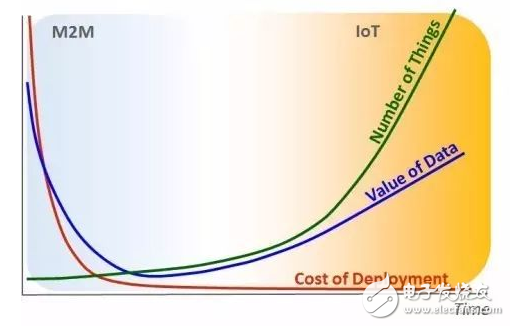The nb-iot is built on a cellular network and consumes only about 180 kHz. The development of nb-iot has been quietly carried out, and the solutions proposed by different camp companies are different. Its development can be described as a zero-based development, which means that it does not need to be considered compatible with each of the GSM established standards. Instead, the design principle of nb-iot is to embed the space that coexists with the current frequency. This greatly reduces the difficulty and cost of production.
In September last year, some companies with competitive relationships miraculously agreed on a unified approach, and plans to complete the specification by March 2016. In order to let everyone understand the meaning of this time, here is to tell everyone that the 3GPP team generally decides which sandwiches to eat for lunch. But this reflects their determination. They just announced that the time has been delayed from March to summer. There may be an extension in the future, but this is indeed the focus of their work.
From this we think of the World Mobile Communications Conference. The Global Mobile Telecommunications System Association’s propaganda machine is full of firepower, and it is widely advertised that the nb-iot is ready to go. The Global Mobile Communications Systems Association's innovative cities and most large network operators' booths have live demonstrations. According to Vodafone news, commercial trials will be conducted this summer, and all deployments will be completed by the end of next year.
specification
The first thing that needs to be clarified is the norm. The benefit of the nb-iot approach is that it does not require interoperability with any previous version of LTE, which is different from the heavier LTE Cat-1 and LTE-M versions. The two different nb-iot proposals proposed by the two camps, Nokia/Ericsson/Ilter and Huawei/Vodafone, have been tested in “real combat†and should have reached a fairly advanced level. However, it is now necessary to combine these two proposals, and integration takes time. It seems that the time is too tight in June.
But the norm is only the first part of the story. To be an interoperable specification, 3GPP engineers need to write a complete set of test requirements and then test different implementations to ensure that the specifications are clear and complete. This typically requires a modem for 6-9 months. The network also needs to do the same work, which is more complicated. If you want to launch a product and roam between the various complex network operators in the world, you have to do it. I judge that this will not be completed until the end of 2017.
Equipment test
I consulted with some testing organizations and test equipment suppliers when they were able to supply nb-iot test equipment and when they could be certified. No one can give a point in time, most of them laughed after watching Vodafone's timetable. They understand the field and know the real schedule. People ignore them, they are invisible parts of the industry, but unless they are ready, no one can move forward.
chip
At the same time, what is needed is the chip. Much of the testing and development can be done on existing chips - just using a fraction of the performance of the chip. This is the case with the tests so far. However, this method is too expensive, consumes too much power, and cannot be put into mass production, so the nb-iot module of $5 is acceptable. Intel released a press release on the first day of the World Mobile Communications Conference, announcing that they will release an nb-iot chip in the second half of 2016. If a chip company says it is the second half of the year rather than the more accurate third or fourth quarter, then the product is generally longer than the finished product and is unlikely to be released before the third quarter. Therefore, it is impossible before 2017.

Module
I also talked to the module supplier at the next level of the supply chain. One of the companies, called uBlox, has started working on the SARA-N200 module for Huawei/Vodafone trials, and I suspect the module may be running on the old Neul chipset. But most of the other suppliers I have talked to cannot complete production until mid-2017. They all told me that I didn't expect things to develop so fast, and I was reassessing my road map. But it takes time to get this stuff online. It usually takes at least a year.
The internet
After you have a modem, you need a network. Many network operators have shown the same application, usually tracking a bicycle or a Labrador, plus several parking and design for smart city enthusiasts. Smart metering solution.
Network operators are very good at PR, so it's useful to have a question that can be used to determine how well they understand the technology. The question I am preparing for nb-iot is: "Does the device require a SIM card?" All operators except Deutsche Telekom replied "need" but not actually. Deutsche Telekom’s answer impressed me: “The device will initially require a SIM card, but it will be transferred to an embedded SIM card,†but later their embedded SIM card experts told me that the embedded SIM card has nothing to do with IOT. The previous answer was messed up.
General junction box consists of box cover, box body, wiring terminal, diode, connecting line and connector.
The Shell should have strong anti-aging and UV resistance; Meet the requirements of outdoor harsh environment conditions;
The self-locking function makes the connection more convenient and firm;
There must be waterproof and sealed design, scientific insulation protection against electric shock, with better safety performance;
Digital Junction Box,Load Cell Accessories,Stainless Steel Junction Box,Waterproof Digital Junction Box,12 Ways junction box
Ningbo Santwell Imp & Exp Co.,Ltd , https://www.santwell.com